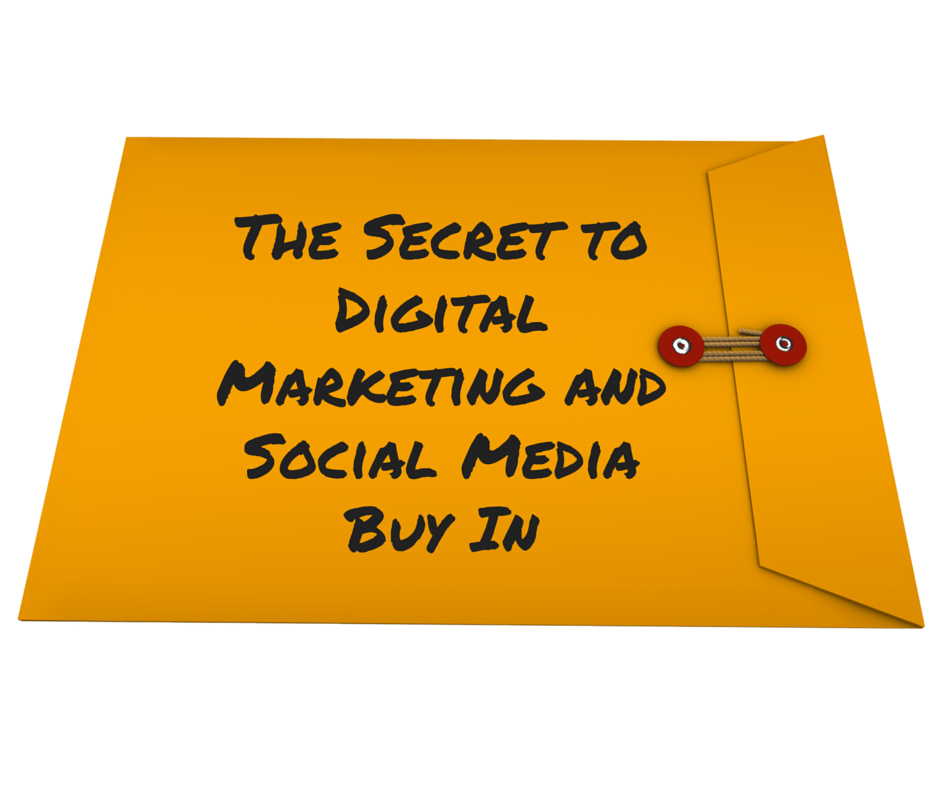 There are a great many individuals – business owners, managers and employees – who struggle with full-scale adoption of proven, elementary digital marketing strategies that they know are crucial to the future viability of their company. The struggle in getting digital marketing and social media buy in often becomes so overpowering that amazing opportunities soon scatter in the wind.
There are a great many individuals – business owners, managers and employees – who struggle with full-scale adoption of proven, elementary digital marketing strategies that they know are crucial to the future viability of their company. The struggle in getting digital marketing and social media buy in often becomes so overpowering that amazing opportunities soon scatter in the wind.
Those of us who are on the “front lines” of digital marketing often forget that we live in a bubble. We pride ourselves on knowing the latest digital marketing techniques; we keep ourselves informed of the perpetual changes because we thrive in that world. It’s easy to migrate into an early-adopter tribe and forget that most people are nowhere close to adopting the ideas we advocate.
Most everyone can name at least 2-3 people who don’t buy into the benefits of digital marketing. It might be your boss but it could be your employees, too. The inevitable frustration takes its toll and leads to unhealthy consequences.
Once again, a Seth Godin sentence that he strategically placed at the end of his blog post, inspired me to look deeper into my attitudes on digital marketing and social media buy in. Until I read Seth’s words, I didn’t realize just how cavalier I’ve been in underestimating the pace of evolution from fringe idea to mass idea adoption.
“The mistake idea merchants make is that they bring their fringe ideas to people who don’t like fringe ideas, instead of taking their time and working their way through the progression.” ~Seth Godin
Buying Into Change
When I first started Kruse Control, it was an operational consulting firm. I’d spent many years managing successful car dealerships and after some significant events in my life, I decided to use my knowledge and experience to help struggling auto dealerships find their way to more revenue.
I’ve always had a knack for spotting issues quickly that impede profit. A few hours walking around and a concise review of a financial statement is pretty much all I need to see where improvement can be made. I’m not a savant – the car business is part of my DNA.
When the recession hit, I found myself at a crossroads needing a pivot. I could see social media playing a crucial role in customers’ decision making process. I pivoted Kruse Control to address the shift, but I didn’t realize how much the changing, customer-to-customer communications would effect my target clients.
I wish I would’ve known then what I know now. I mightily underestimated the time and effort it would take clients to adapt. We often get so entrenched in our fringe ideas and how “great” they are, we forget to research, investigate and test the likelihood of our target clients’ or employers’ will to change.
Fast forward 6 years. I’ve pivoted a few times since those early days and through my shortcomings, I’ve learned to focus my efforts on products that deliver the greatest customer value.
Manage Change for True Digital Marketing and Social Media Buy In
Buying into change disturbs some very primal, entrenched beliefs and it’s often resistance to this disturbance that keeps people stuck. Often when we ourselves see the value of the change, we neglect to consider the impact it will have on those who see fringe ideas as dangerous.
The secret to digital marketing and social media buy in is taking the time to work through the idea progression within yourself and your organization.
Before you foist your “fringe ideas” on the boss or your team, make sure you’ve got your house in order. I meet many digital marketers who themselves are not fully bought into the value of what they’re doing, simply due to a lack of confidence, solid information and/or failure to track results that prove their “fringe ideas” are sound.
Getting Others to Buy Into Change
Here are 5 tips to help you facilitate challenges to the status quo and effectively achieve digital marketing and social media buy in:
1. Consistent, Useful Information
The current climate of skepticism in organizations, and certainly with consumers, means the majority of people need to hear information 3-5 times before they believe the message. This is particularly important when you’re trying to convince people of the merits of the change.
As people grapple with emotions, they’re less receptive to believing what they hear. Consistency and repetition are key.
Provide the information that makes their desire to change greater than their desire to stay the same.
2. Speak Their Language
The best way to convey the merits of something that’s seen as fringe is to use an analogous example or story that’s familiar to the audience or person.
Having been in the car industry in the 80’s, I saw the first cell phones, which were actually considered “car phones” because they were too big and cumbersome to carry around. Soon after, there was a version you could carry around but it was so expensive that only the “trendsetters” could afford one.
As technology shifted, and the general public began to crave the advantages and status that cell phones provided, the masses soon had access to, and could afford their own, mobile phone.
Today, most of us can’t imagine life without our mobile device. What once was a fringe idea, is now widely adopted.
3. Numbers Don’t Lie
Buy in on change’s biggest obstacle is often a perceived financial burden. The GM or CFO isn’t going to approve expansion into digital marketing without the promise of ROI, a return on their financial investment.
If you’re pleading your case to the boss, set some attainable goals and objectives and share them with him or her. I know that when I was a GM/CFO, if someone approached me with an idea and could back it up with a good-looking plan, I would seriously consider moving forward with it.
Collect data to prove your idea is viable. If you get a small budget to work with, track what you’re doing and report the results. Never stop tracking and reporting. Even if the answer is no every time, the yes can come at some point.
4. Address the Emotional Quotient
Understanding the emotions that come up for people is key to getting others to buy into change. Do your homework to understand how each person might feel about the change. We’re all human and we’ve all objected to change at some point in our lives. If you can come from that viewpoint, it will be easier to address these emotions that are triggered in your efforts to get buy in:
- Lack of enough information
- Comfort with the status quo
- Suspicion
- Skepticism
- Shifting priorities
- New expectations
- Frustrations
- Need for structure and certainty
- Feeling threatened
Humans are programmed to seek pleasure and avoid pain.
“Change happens when the pain of staying the same is greater than the pain of change.” ~Tony Robbins
5. Know Who to Shut Out
Having been a change-agent most of my life, the one thing I know is that somebody will always try to sabotage your efforts. Resistance to change is normal but these anti-change-agents incite discontent and cast doubt; they actively recruit others to their negative camp.
Do everything you can to keep naysayers out of the conversation. If it’s your subordinate, that’s fairly easy. If it’s your boss, it’s much more difficult.
Leverage these tips and do what you can with the tools you have. If you find you’re unable to overcome the obstacles, there’s always other changes you can consider. “If you can’t change the people, then change the people.”
Whatever you do, don’t give up. You and your “fringe ideas” have a home and there are many of us who are fighting the battle against complacency.
Great things never come from comfort zones. Raise your fringe flag and let it fly!
